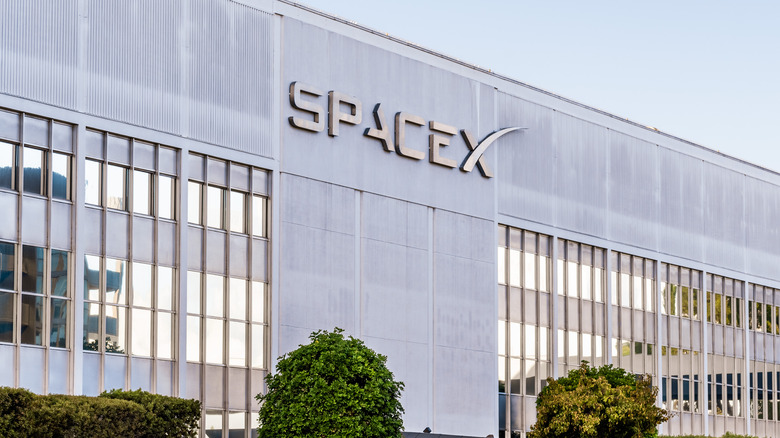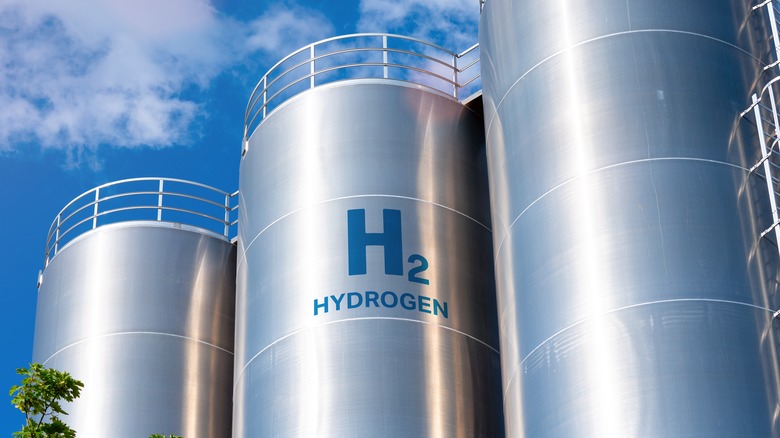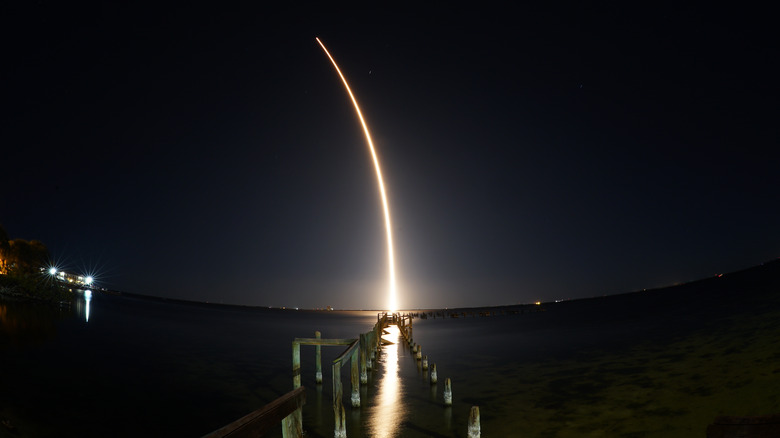Here's How Hydrogen Could Soon Fuel SpaceX Rockets
Hydrogen is the most abundant resource in our universe and harnessing its energy might provide an alternative to other dense and energy-dependent forms of propulsion. Even though hydrogen cars were doomed to fail, the gas is already being used to launch spacecraft (via NASA), but the method of developing liquid hydrogen that propels a rocket skyward hasn't always been the cleanest option. The New York Times reports that recent studies have shown an accumulation of carbon dioxide in the process of creating what is known as gray hydrogen.
To put a finer point on the topic, according to Popular Mechanics, it's recently been announced that SpaceX will be working with a renewable energy startup called Green Hydrogen International in order to procure liquefied hydrogen gas required for future launches. GHI estimates that their new plants in South Texas may be capable of outpacing existing green hydrogen production of even the largest existing plant by an order of magnitude (to the tune of 3 billion kilograms per year).
New technologies for splitting hydrogen atoms may provide the way forward
Hydrogen gas can be extracted in a number of ways. Petrofac notes that depending on the method of producing hydrogen gas, it is referred to as green hydrogen, blue hydrogen, and by other color-coded naming conventions.
Green hydrogen makes use of electrolysis, or the splitting of water into discreet oxygen (O2) and hydrogen molecules (to be bound together into H2), according to Petrofac. This provides humans with the ability to harness the locomotive power held within hydrogen while also protecting the environment for future generations. Instead of adding greenhouse gasses to the atmosphere, this process simply creates oxygen as a byproduct.
GHI's Hydrogen City project aims to add billions of kilograms of liquified hydrogen gas to the global reserve each year, allowing for increased usage in both rocket flight and many other applications. GHI notes that the produced green hydrogen will be stored in the Piedras Pintas Salt Dome and then delivered to SpaceX in Brownsville, pushed along to Corpus Christi, and delivered to other end users beyond that point. The production will help alleviate Texas grid reliance by facilitating current and future hydrogen-fueled power plants and will make its way into other fuels and commercial applications such as the production of ammonia products and fertilizers.
A new fuel partner could launch SpaceX and humanity itself to new heights
SpaceX is already a preeminent player in the world of space exploration. SpaceX reports 185 total launches to date with 147 landings and 122 total reflights under the company's belt, at the time of publication. Reusable launch vehicles may soon change what humans think is possible when it comes to exploring the heavens above.
Adding a reliable source of rocket fuel that doesn't negatively impact the environment could change the way that SpaceX goes about planning and executing future launches of all types. The New York Times reports that NASA's long-term plan for ultimately landing on Mars involves the establishment of outpost locations on and around our Moon. NASA already picked SpaceX's Starship to get them there. Of course, building there might be a tricky endeavor for multiple reasons, but with a stable partner in SpaceX, NASA and other space agencies across the planet are likely to find the physical challenges of delivering key resources, infrastructure, tools, and personnel just a bit easier.
This new development may just reimagine what is capable, not just for SpaceX, but for the entire scientific field of space travel and exploration.


